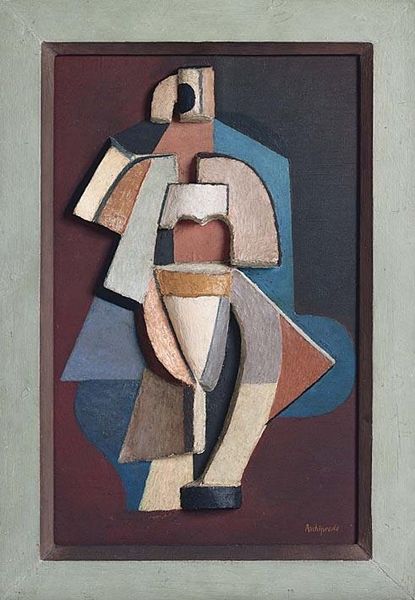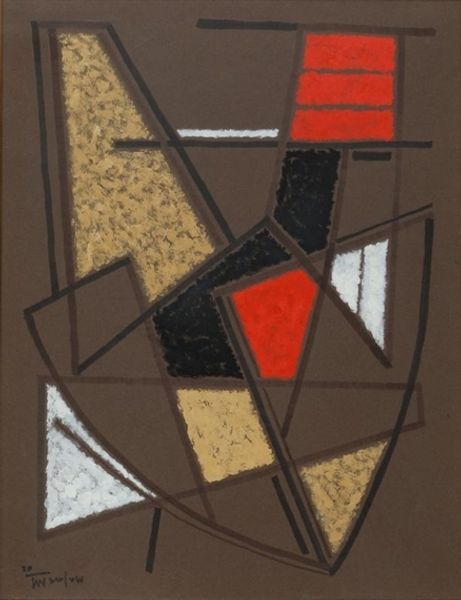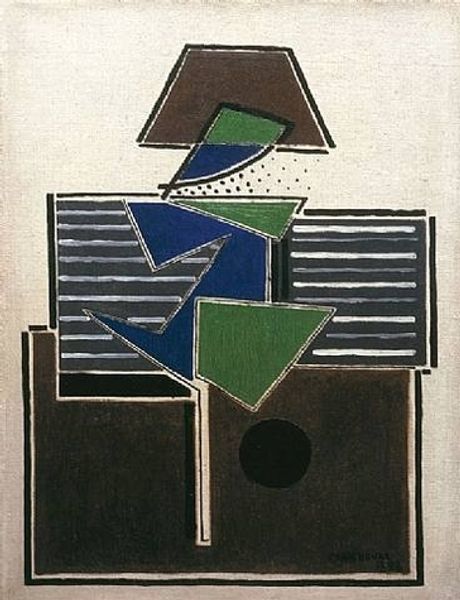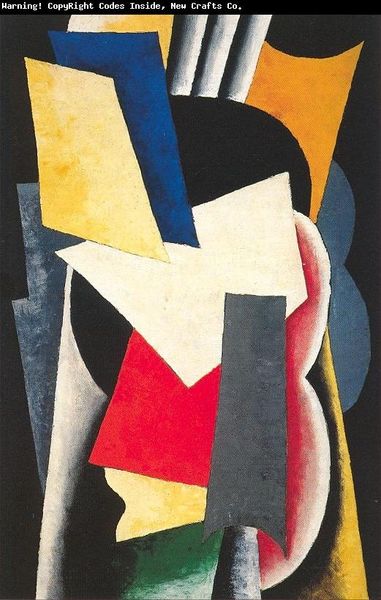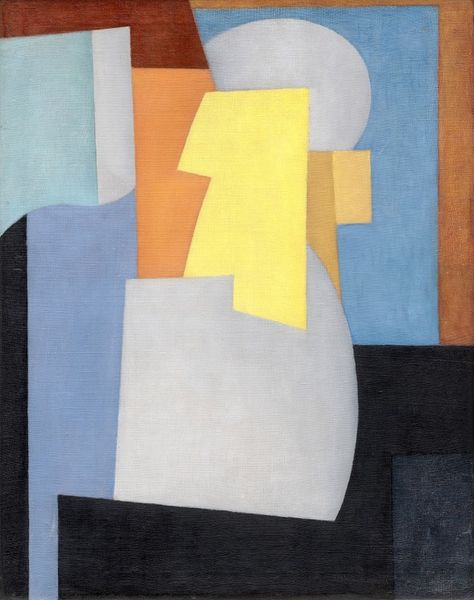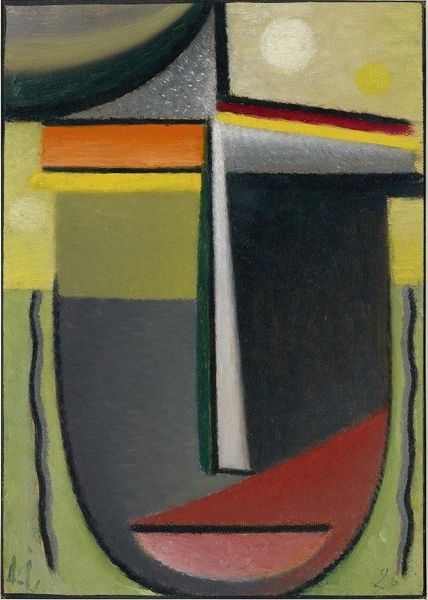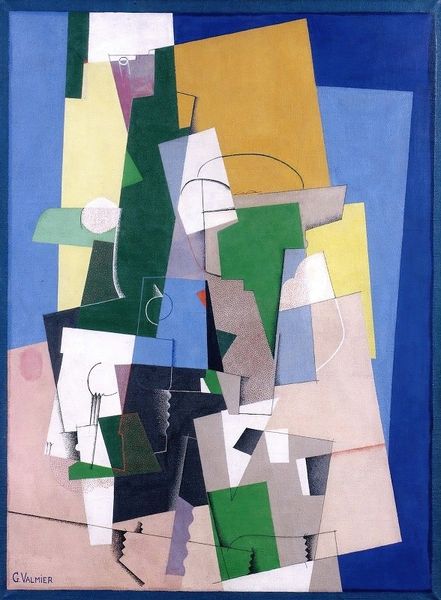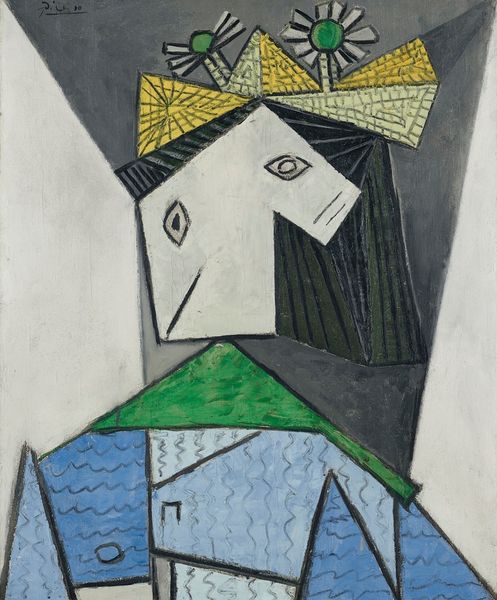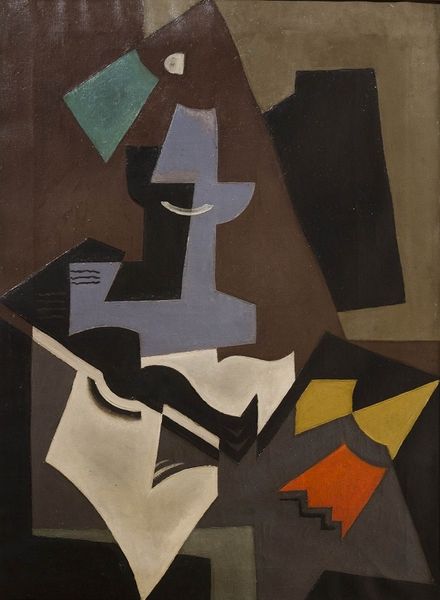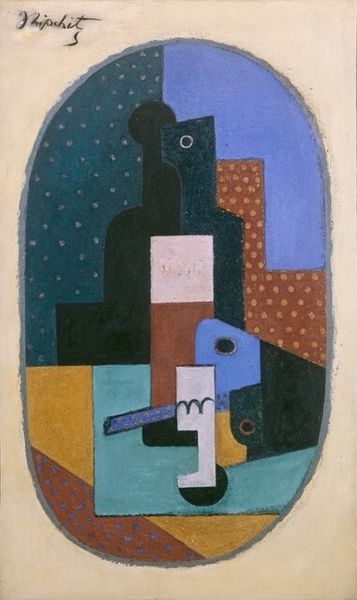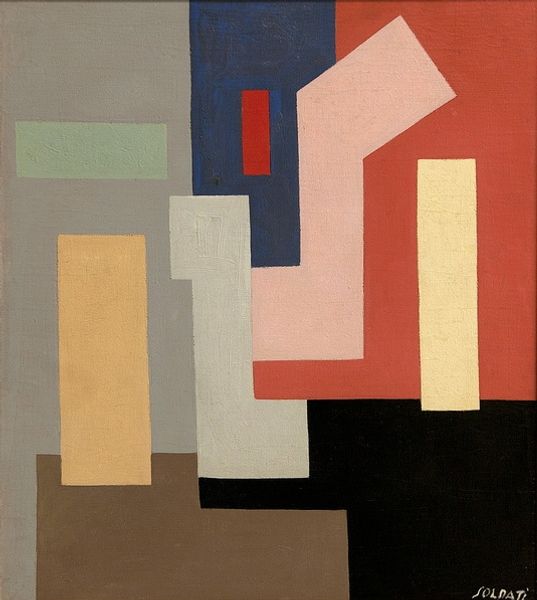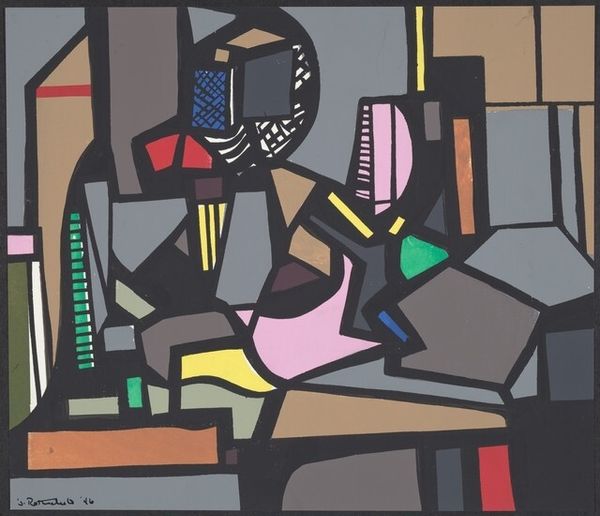
painting, oil-paint
#
painting
#
oil-paint
#
geometric
#
geometric-abstraction
#
abstraction
#
modernism
Copyright: Alberto Magnelli,Fair Use
Curator: Immediately, I see something melancholic and muted, yet undeniably structured. There's a feeling of precarious balance, of shapes almost floating against a heavy ground. Editor: We’re looking at Alberto Magnelli’s "Sur fond gris n. 10" created in 1963, an oil painting exemplifying geometric abstraction. Considering the work's title, let's start with that "gray background". What materials and labor went into creating this seemingly simple ground? Curator: It serves as more than just a backdrop; it sets the emotional tone, which makes the geometry more complicated. Think of how social upheavals in the early '60s saw anxieties and disorientations bubbling under the surface, especially given Magnelli's association with avant-garde movements... It seems to me this reflects the fragmentation and questioning of established norms of the era. Editor: Exactly. Looking closer at the fractured geometric forms and the interplay of brown, gold, black, and white...one observes an emphasis on material and construction. This is not just about lines and color, but about the physicality of the oil paint, its texture, and the act of applying it to the canvas. Magnelli seems invested in the 'how' of the artwork's creation as much as the 'what.' Do you find any evidence of his process challenging the art market, for example, through his artistic choices? Curator: Well, challenging it perhaps by defying easy categorization? It’s abstract but avoids complete non-representation. Also, geometric abstraction, particularly for Italian artists like Magnelli, was a political choice: Constructing new visual languages for a society undergoing rapid changes... But beyond technique, consider how his work, produced amidst the anxieties of the Cold War, almost dismantles and rebuilds concepts of form and stability to reflect what was going on culturally and politically at the time. Editor: Yes. Magnelli’s particular blend of order and deconstruction makes one examine what we consider "high art." Is this painting reflecting societal tensions? Certainly, through form and content, we see his manipulation and transformation of raw materials in response to broader conditions. Curator: Magnelli asks what is beauty if not something reconstructed. His language presents the chaos into new possible orders in abstraction itself. Editor: Ultimately it allows the materiality, both tangible and social, to speak for itself. A subtle rebellion made of gray, if you will.
Comments
No comments
Be the first to comment and join the conversation on the ultimate creative platform.
